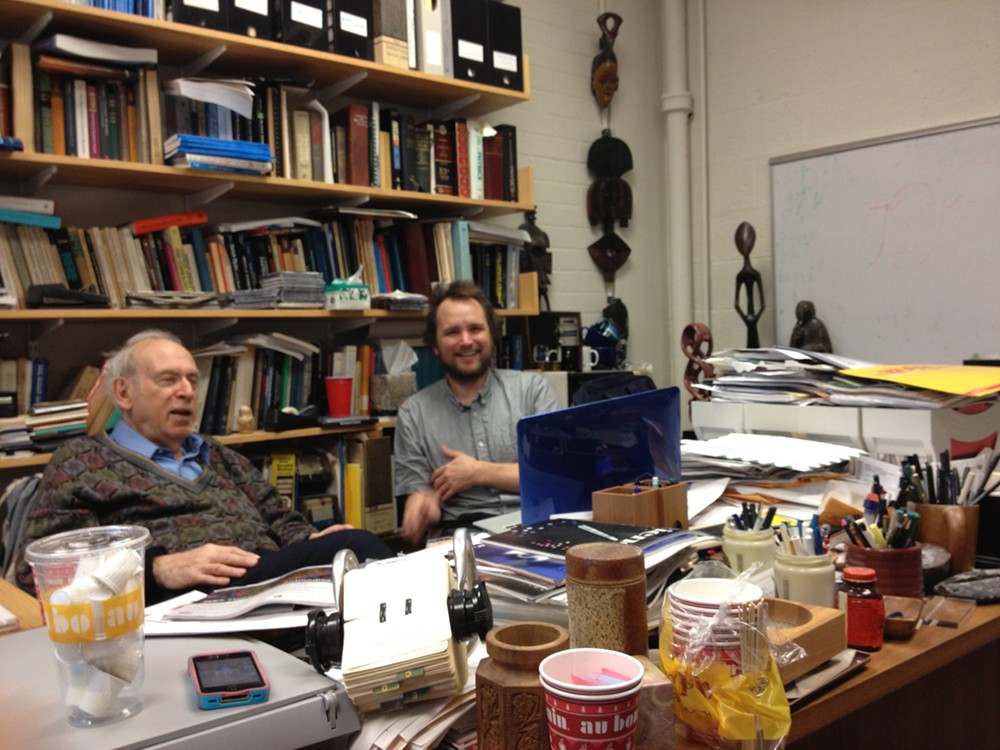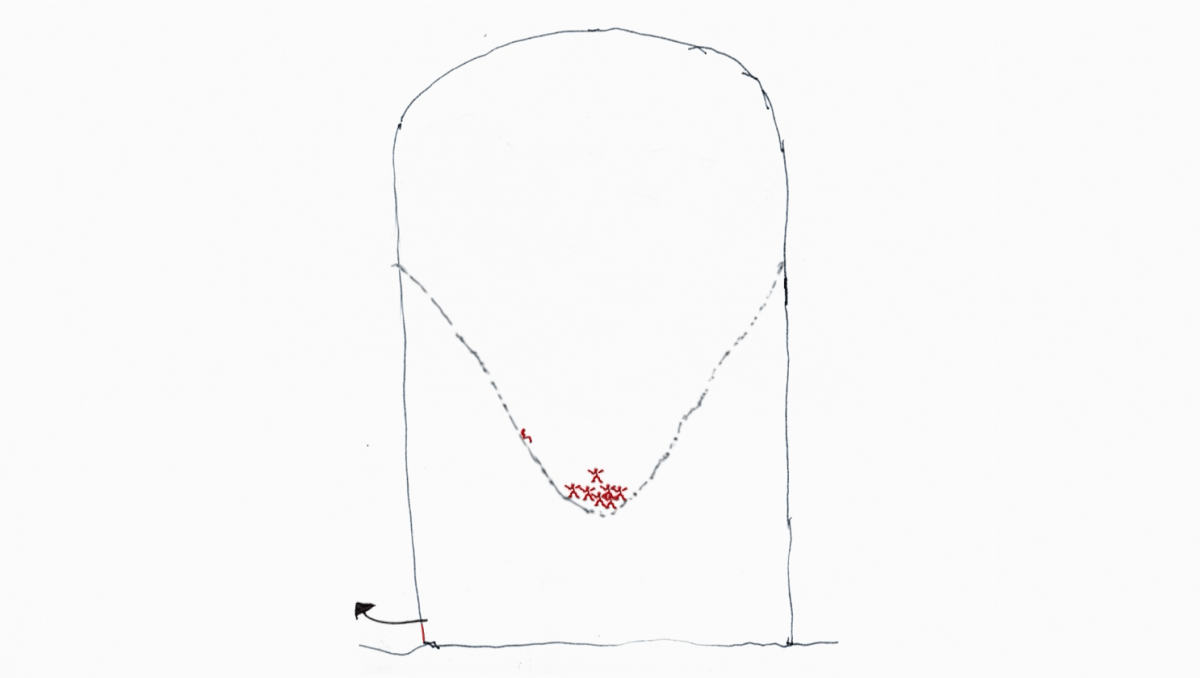On Space Time Foam
In Tomás Saraceno’s most recent installation On Space Time Foam, visitors are invited to enter three clear membranes of plastic suspended 25-meters in the air. The installation creates a new bodily experience, transforming everyday perceptions of space and one’s relationship to others. In this work, he takes as his material and inspiration the basics of physics: mass, energy, space, and gravity. At MIT, he had the opportunity to share his work with physicists Jerome Friedman and Robert Jaffe, Edward Farhi, and Alan Guth from MIT’s Center for Theoretical Physics.

Jerome Friedman
“In just about all my science, I think in images.” – Jerome Friedman
“All rules are off that we think of in everyday life,” said the Nobel Laureate Jerome Friedman about the branch of physics known as quantum mechanics, which attends to physical phenomena at the atomic and subatomic level. In 1990, Friedman won a Nobel Prize for his discovery of quarks, a subatomic particle and fundamental building block of matter.
Quantum Foam
It is on this minute scale – measured in what’s known in physics as the Planck length—that quantum foam is said to exist. Thought to constitute the most basic fabric of the universe, the idea of quantum foam was originated by John Wheeler in 1955. When it comes to the atomic scale, the normal properties of spacetime are disrupted. Its texture becomes not smooth but bubbly and foam-like due to fluctuations in energy (which is known to have a curving effect on space). But without an overarching theory of quantum gravity, similar to what Einstein offered for the visible world, quantum foam remains one of many cosmological puzzles.
On Space Time Foam operates on a less microscopic scale. Friedman appreciated the installation because it modeled the curvature of space and gravitational force as postulated in Einstein’s theory of general relativity, where the energy and momentum of matter has a direct relation to the curvature of space. In On Space Time Foam, the mass-energy of the visitors’ bodies stretches and sinks the diaphanous membrane just as the earth does spacetime.
“The universe is such an awesome place,” Friedman said, “and in your art you’re trying to represent that awesome quality.” The importance of observation and visualization in science is integral to the practice of science, according to Friedman. “The potential of observing something—that’s what science is all about,” he said.
Jerome Friedman is an MIT Institute Professor and Professor of Physics, Emeritus, and 1990 Nobel Laureate.

Robert Jaffe, Edward Farhi, and Alan Guth
“In our world, the vacuum is a very lively being.” – Robert Jaffe
Quantum fluctuations, referring to changes in the amount of energy in space and said to be responsible for quantum foam, was one of the many topics discussed in a meeting with Saraceno and physicists Robert Jaffe, Edward Farhi and Alan Guth. Jaffe thought he might be able to integrate Saraceno’s work into a problem set for his students in his course, “Physics of Energy.”
Vacuum Energy
Although the vacuum is conventionally conceived as a place of absolute nothingness, the vacuum in quantum field theory is understood to be full of fluctuating electromagnetic waves. Endlessly moving in all possible wavelengths, these waves indicate that some sort of energy exists in this empty space.
One manifestation of this vacuum energy, Jaffe said, is found in the Casimer Effect, which can be demonstrated by the attraction of two uncharged metal parallel plates in a QED vacuum. Between these two plates, waves move back and forth. However, longer wavelengths will not fit between the plates as they come closer together. Consequently, the total amount of energy between these plates is less than the amount of energy in the surrounding vacuum – causing the plates to attract as the energy between them decreases.
Some scientists speculate that vacuum fluctuations similar to the Casimer Effect are related to dark energy, a vast and unknown form of energy that constitutes about 70% of the mass-energy of space and is said to contribute to the infinite expansion of the universe.
Robert Jaffe is the Jane and Otto Morningstar Professor of Physics.
Edward Farhi is the Cecil and Ida Green Professor of Physics and Director of the Center for Theoretical Physics.
Alan Guth is the Victor F. Weisskopf Professor of Physics.




